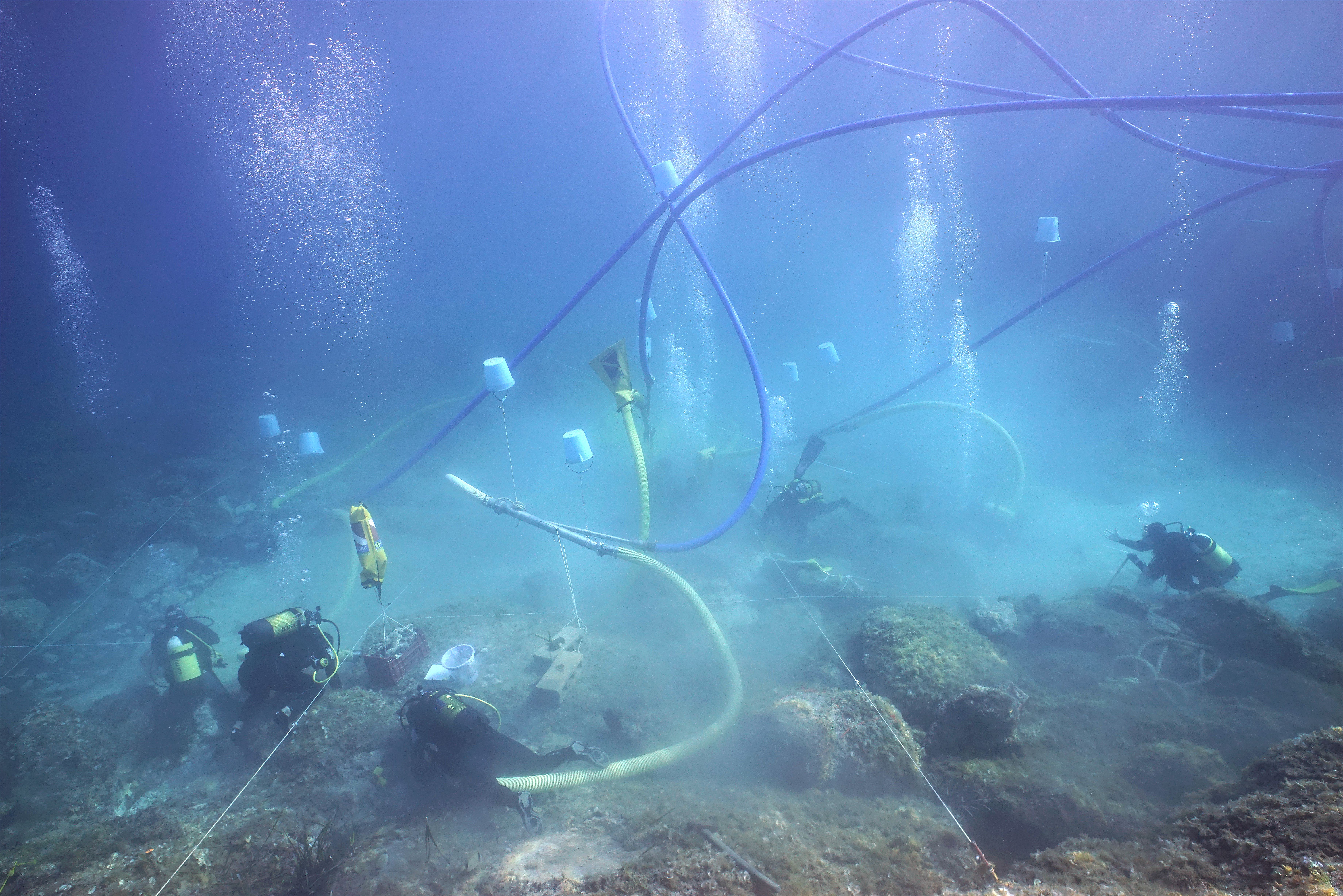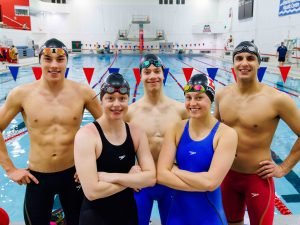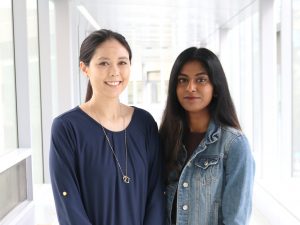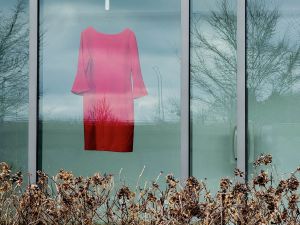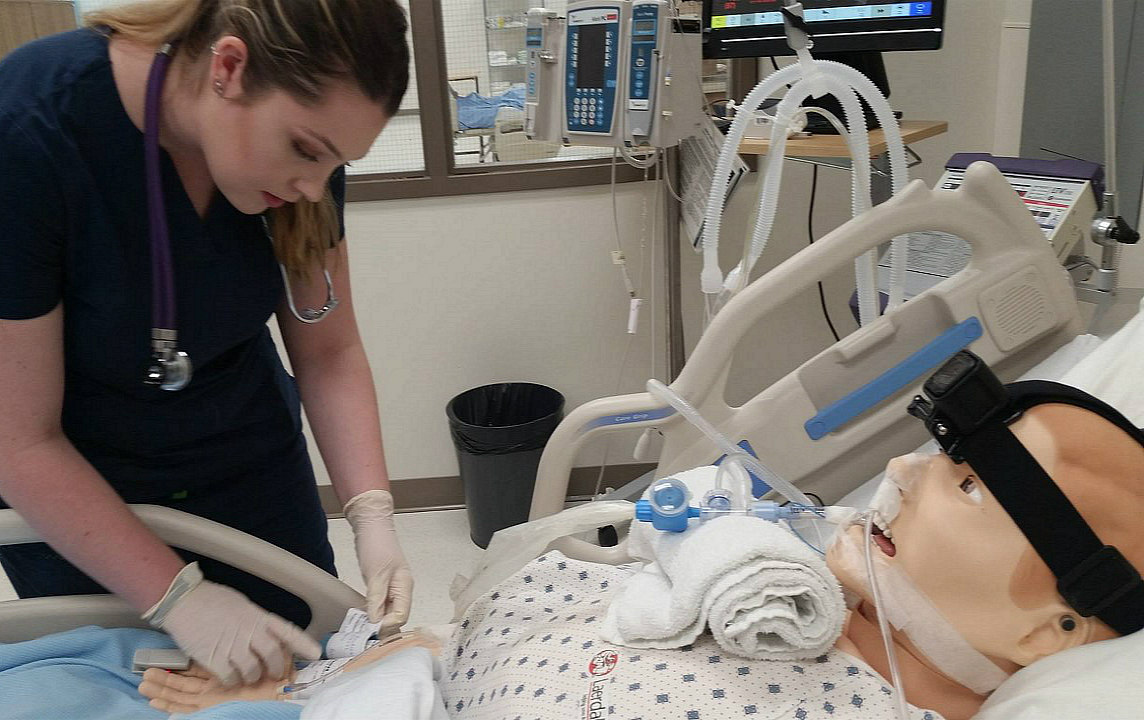 Nursing student Kayleigh Tyrer works with a patient simulator. The life-like robot is one of the many pieces of high-tech research and learning equipment used at Brock University.
Nursing student Kayleigh Tyrer works with a patient simulator. The life-like robot is one of the many pieces of high-tech research and learning equipment used at Brock University.A mannequin that tells you he’s in pain. A ‘vacuum cleaner’ that clears debris from an underwater ancient shipwreck. A maze of pipes and pumps measuring 800 million-year-old air.
These are among the cutting-edge, creative or just plain cool technologies that help Brock University researchers unlock the secrets contained within their various disciplines.
The High Fidelity Simulation Mannequin — stretched out in a hospital bed in the Department of Nursing — has a heart that pumps, lungs that breathe, eyes that blink and can even answer questions. Attached to the “patient’s” head is a GoPro camera, which enables Karyn Taplay and her team to conduct their simulation research.
“The purpose is to capture the care provided by student nurses from the patient’s perspective,” says Taplay, an associate professor in Nursing. “The students then watch the care they provided and reflect on it, from the patients point of view. This research has the ability to revolutionized reflective practice that is key component of nursing and impact patient-centered care.”
Meanwhile, eight metres under water off the coast of Sicily, archaeologists on the Marzamemi Maritime Heritage Project are diving on a 6th-century shipwreck. They grip the mouth of a machine called a Water Dredge, which looks — and acts — like a vacuum cleaner.
“The Water Dredge allows us to carefully remove thousands of years of accumulated sediment from the wreck, revealing its cargo of marble columns and other archaeological elements destined for the construction of a church,” says Elizabeth Greene, associate professor in the Department of Classics.
“Through our research at Marzamemi, we are learning about the mechanics of maritime transport in the changing world of late antiquity and the relationship between state-driven and independent commerce.”
And then there’s the complicated-looking machine that gives Nigel Blamey and his colleagues around the world a ‘blast from the past,’ a Quadrupole Mass Spectrometer based on a modified design constructed by his then-PhD advisor in the 1970s and housed at New Mexico Tech.
The Earth Sciences professor places a sample of rock salt called halite into the vacuum chamber. As the rock is crushed, 800 million-year-old trapped fossil gas disperses into the highly-sensitive spectrometer, which reads and analyzes the gas content and composition.
It turns out that there was five times as much oxygen 800 million years ago than previously thought, opening the door for a reinterpretation of Earth history.
“Deciphering the oxygenation history of the atmosphere and oceans is critical to understanding weathering processes, sedimentary environments, climate change, mass extinctions, selected ore deposits, and the evolution of Earth’s biota,” says Blamey.
In addition to individual pieces of equipment, Brock has state-of-the-art laboratories.
Unique to a Canadian university is an insectary within Brock’s CL3 lab. This enables medical entomologist Fiona Hunter and her team to make breakthroughs in mosquito research.
Their latest research found what are believed to be the first Aedes aegypti mosquitoes in Canada during surveillance in Windsor.
The species, commonly known as the yellow fever mosquito, is responsible for the majority of human cases of Zika virus infections in the Caribbean, South America and Florida.
Kinesiology professor Stephen Cheung’s Environmental Ergonomics Lab (EEL) features an environmental tank and chamber. The tank contains water varying from eight to 45 degrees Celsius, while air temperatures in the chamber can range from -30 to +50 degrees Celsius.
“It is quite unique to be able to manipulate both temperature and oxygen at the same time,” says Cheung, who is Canada Research Chair in Environmental Ergonomics. “We can replicate the altitude of approximately Mexico City (2,300 m) and do that while either in the cold or heat.”
Research participants exercise in various conditions of heat, cold, humidity and oxygen levels. Cheung and his team take a variety of physical readings from the participants to measure the effects of environmental stress on human physiology and performance.
“We are thankful to our partners and funders for the cutting edge equipment our researchers use as they learn more about the world around us,” says Vice-President Research, Joffre Mercier.
Brock’s major funders include the Natural Sciences and Engineering Research Council (NSERC), the Social Sciences and Humanities Research Council (SSHRC) and the Canada Foundation for Innovation (CFI).
Others include: Restorative Therapies in Baltimore, MD; Ontario Ministry of Health and Long-term Care; and Ontario Ministry of Training, Colleges and Universities
To see a sampling of equipment Brock researchers use, see the slideshow.

